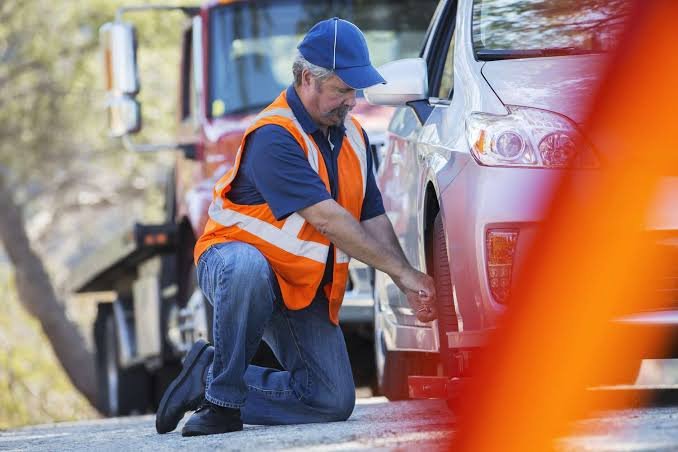Business
The Impact of Waste on Wildlife and Biodiversity

Waste, particularly plastic waste, poses a severe threat to wildlife and biodiversity worldwide. The improper disposal of waste, such as plastic bags, bottles, and packaging, has led to devastating consequences for ecosystems. Animals often mistake plastic items for food or become entangled in them, resulting in injury, suffocation, and death. Plastic waste can also leach harmful chemicals into the environment, affecting the health of wildlife.
Skip hire cheadle can help manage waste responsibly, reducing the negative impact on wildlife and biodiversity by ensuring proper disposal and recycling of materials, and minimizing pollution and habitat destruction. Furthermore, the degradation of habitats due to waste disposal disrupts ecosystems and threatens biodiversity. Addressing the impact of waste on wildlife and biodiversity is crucial for the preservation of our natural world.
Climate Change:
Climate change exacerbates the impact of waste on wildlife and biodiversity. Rising temperatures, sea levels, and changing weather patterns can alter habitats, disrupt ecosystems, and threaten the survival of many species. Increased heat can lead to heat stress and dehydration in animals, while more frequent and severe weather events can destroy habitats and disrupt migration patterns. Additionally, ocean acidification, a result of increased carbon dioxide levels in the atmosphere, can harm marine life and coral reefs. Addressing waste management and reducing greenhouse gas emissions are crucial steps in mitigating these impacts and protecting wildlife and biodiversity.
Biodiversity:
Waste poses a significant threat to biodiversity by disrupting ecosystems and endangering wildlife. Plastic pollution, a major component of waste, directly harms biodiversity by entangling and suffocating marine life, and by leaching toxic chemicals into the environment. In terrestrial habitats, waste accumulation alters soil composition and can lead to habitat degradation. Additionally, waste can introduce invasive species that outcompete native species, further reducing biodiversity. It is important to reduce waste generation, improve waste management practices, and raise awareness about the importance of preserving biodiversity for the health of ecosystems and the planet in order to mitigate these impacts.
Waste Reduction:
Waste reduction plays a critical role in mitigating the impact of waste on wildlife and biodiversity. Our efforts can reduce the likelihood that wildlife will encounter and be harmed by waste by reducing the amount of waste we generate. Our efforts can reduce the likelihood that wildlife will encounter and be harmed by waste by reducing the amount of waste we generate. This includes avoiding single-use plastics, opting for reusable items, and practising responsible consumption habits. Additionally, proper waste management, such as recycling and composting, can help minimize the amount of waste that ends up in landfills or natural habitats. Education and awareness campaigns are also essential in encouraging individuals and communities to adopt sustainable waste reduction practices for the benefit of wildlife and biodiversity.
Biological Impacts:
The biological impacts of waste on wildlife and biodiversity are profound. Plastic waste, for instance, poses a serious threat as animals often mistake it for food, leading to ingestion and internal injuries. Chemical leaching from waste can disrupt hormonal balance, impair reproduction, and weaken immune systems in various species. The introduction of invasive species can also disrupt ecosystems by outcompeting native species. During the breakdown of larger plastic items, microplastics accumulate in animals’ bodies, causing harm throughout the food chain. These biological impacts highlight the urgent need for better waste management practices to protect wildlife and biodiversity.
Public Health:
The impact of waste on public health is closely linked to its effects on wildlife and biodiversity. Improper disposal of waste can lead to the spread of diseases through contaminated water sources and food supplies. For example, discarded plastics and other waste materials can serve as breeding grounds for disease-carrying pests like mosquitoes and rats. As a result of the leaching of harmful chemicals from waste into the environment, soil and water can become contaminated, posing health risks to humans. Addressing waste management issues is not only critical for preserving wildlife and biodiversity but also for safeguarding public health.


Conclusion:
Waste poses a significant threat to wildlife and biodiversity. The physical harm, chemical pollution, habitat destruction, spread of invasive species, and presence of microplastics all contribute to the degradation of ecosystems and the endangerment of species. To mitigate these impacts, it is crucial to promote sustainable waste management practices, reduce plastic use, and increase recycling efforts. To change behaviours and foster a greater sense of responsibility towards the environment, education and awareness campaigns are necessary. By taking action to reduce waste and protect wildlife, we can help preserve biodiversity for future generations.
Visit hinttoday for more.
Business
Unleashing the OXVA Xlim Pro Pod Kit 1000mAh


Launched in 2023, the OXVA Xlim Pro Pod Kit 1000mAh ramps up the power, flavour intensity, and functionality of previous devices. Find out more about it.
The OXVA Xlim Pro Pod Kit 1000mAh burst onto the scene in 2023 and continues to gain a dedicated following among vapers looking for extreme flavour and a strong throat hit or a great alternative to disposable vapes. With faster charging, more power, a new RGB light, and an updated cartridge with direct top fill, it’s easy to see it’s hailed as one of the best pod kits available in the UK. There’s more to this kit, of course, so keep reading and find out why you should add it to your collection.
Design and Features
The OXVA Xlim Pro Pod Kit 1000mAh packs a powerful punch, reaching up to 30W output and offering up to three days of uninterrupted vaping, thanks to a 1000mAh battery. You can charge the OXVA Xlim Pro Pod Kit quickly using the Type-C cable supplied with the kit.
The kit itself is constructed from high-quality zinc alloy, IML, and PCTG. The metal frame design has front and back panels, giving this vaping device a solid, sturdy feel. Thanks to the variety of options, you won’t have any trouble finding a finish that matches your personal style. Among them are colours such as Aurora Blue, Gleamy Green, Brown Leather, Coral Orange, and Fancy Feather.
This kit has a 0.42-inch OLED mini screen, manual ignition, an auto-draw function, and a side airflow control design offering tighter or looser mouth-to-lung (MTL) vaping. The 2ml anti-leak pod has a top-fill design, and there’s no need to remove it or the fixed bacteriostatic mouthpiece from the device when you want to refill it with standard or nicotine salt e-liquid in the flavour of your choice. The OXVA Xlim Pro Pod Kit 1000mAh is supplied with a pre-installed 0.6ohm Xlim cartridge and a 0.8ohm Xlim cartridge.
E-Liquids and Flavours
50/50 standard or nic salt e-liquids are the best ones to use with the OXVA Xlim Pro Pod Kit 1000mAh. When it comes to flavour, you certainly aren’t short of options.
You can choose from pre-filled cartridges in flavours such as Rose Lemonade, Fizzy Cherry, Apple Peach, and Rainbow Candy, or you can opt for OXVA Ox Passion Nic Salts in flavours such as Strawberry Melon, Blueberry Pom, Senorita, and Paradise Punch.
Experience the OXVA Xlim Pro Pod Kit
The sleek design, robust build, superb functionality, and intense flavours of the OXVA Xlim Pro Pod Kit 1000mAh make it a must-have kit for vapers looking for convenience and power in an easily portable vaping device. Purchase the OXVA Xlim Pro Pod Kit at an incredible price, explore the rest of the OXVA range at Legion of Vapers, and take the next step on your vaping journey.
Business
Gaining a Competitive Edge: Leveraging Customer Feedback for Success


What is Customer Feedback?
Customer feedback is information clients provide about their experiences with a company’s products or services. It can take various forms, including surveys, reviews, and direct communication. Leveraging the right customer feedback software can streamline the process, making gathering and analyzing valuable data easier. Feedback allows businesses to understand their clientele’s expectations and perceptions, which is essential for continuous improvement.
Customer feedback aligns with your audience’s opinions, concerns, and suggestions. It enables companies to highlight strengths and identify weaknesses. By routinely gathering and evaluating customer input, businesses may stay competitive and relevant in a rapidly changing market.
Why Customer Feedback Matters
Feedback is crucial because it offers businesses a window into what’s working and what’s not. According to Forbes, happy customers are more likely to return and recommend products to others, directly impacting revenue. Businesses may adjust and advance by knowing the requirements and preferences of their customers, fostering greater customer loyalty and satisfaction. Ignoring customer feedback might result in lost chances for development and ongoing enhancement.
Furthermore, constructive feedback helps identify market trends and consumer behavior. It provides actionable insights that can shape business strategies. By actively seeking and valuing customer feedback, businesses may give their audience more credibility and a closer bond, which will help them feel heard and valued.
Different Methods for Collecting Customer Feedback
Gathering feedback can be done through various methods, including:
- Online surveys
- Social media interactions
- Customer interviews
- Feedback forms on websites or apps
Every approach offers benefits, and the best choice will depend on the company’s demands and clientele. For instance, online surveys are quick and cost-effective, allowing companies to reach a large audience. On the other hand, social media interactions provide real-time feedback and conversationally engage customers. Customer interviews offer in-depth insights that can uncover deeper issues or highlight new opportunities. At the same time, feedback forms on websites or apps provide a structured way for customers to share their thoughts at their convenience.
Analyzing Customer Feedback
Once collected, feedback must be analyzed to spot trends and patterns that help guide strategic choices. Practical analysis can provide insights into areas needing improvement and highlight successful aspects of the business. Utilize data analytics tools to process large volumes of feedback and derive actionable insights. This step is crucial as it translates raw data into meaningful information that can lead to significant improvements.
Analyzing feedback involves looking for recurring themes, categorizing responses, and using metrics to measure overall sentiment. For instance, many complaints about a particular feature indicate a need for improvement. Positive feedback on specific aspects can affirm the effectiveness of current practices and help replicate successes in other areas. Businesses can prioritize actions that yield the most significant impact by systematically analyzing feedback.
Implementing Changes Based on Feedback
More than collecting and analyzing feedback is required, as businesses must act on the insights gained. Putting suggestions into practice can result in enhanced customer satisfaction and loyalty. For example, if multiple customers criticize the same feature, it indicates that improvement is needed. Conversely, positive feedback can help reinforce what’s working well and drive its further development.
Implementing feedback effectively involves setting clear goals, allocating resources, and communicating changes to customers. Customers must feel that their opinions are essential, resulting in real advancements. This can be done through updates on social media, email newsletters, or direct communication. Demonstrating responsiveness to feedback boosts customer satisfaction and encourages more customers to share their opinions.
Common Challenges in Gathering and Using Feedback
Although valuable, gathering and using customer feedback has its challenges. One major issue is potential response bias. Ensuring that feedback is representative and actionable requires thoughtful strategies. Businesses must also address input promptly to keep customers engaged and satisfied. Overcoming these challenges involves using diverse feedback collection methods and ensuring anonymity to encourage honest responses.
Another challenge is the sheer volume of feedback that can be received, making it hard to sift through and find actionable insights. Prioritizing issues based on frequency and impact can help manage this workload. Additionally, continuous monitoring and updating of feedback strategies are essential to remain aligned with evolving customer expectations and technological advancements.
Success Stories: Businesses Thriving from Feedback
Many companies have successfully used customer feedback to grow and improve. For example, XYZ Company redesigned its product features based on user suggestions, resulting in a 20% rise in client retention and a notable boost in customer satisfaction. Such success stories underline the importance of listening to customers and valuing their opinions.
In another case, a small business revamped its customer service protocols after consistently receiving feedback about slow response time. Hiring additional support staff and implementing a more efficient ticketing system cut response times by 50%, resulting in a rise in favorable evaluations and heightened patronage.
Conclusion
Consumer reviews are an effective strategy for expanding a firm. Companies can better meet customer needs, improve products and services, and drive success by collecting, analyzing, and implementing feedback. Comprehensive customer feedback software can make this process seamless and more efficient, providing a structured approach to understanding and acting on customer insights. Embracing input as a vital component of business results in a better customer experience, which might result from corporate strategy, higher satisfaction rates, and sustained growth. Enjoy Hint Today.
Business
Roadside Assistance: What to Expect When You Call for Help


Key Takeaways:
- Understand the different types of services provided by roadside assistance.
- Learn the typical process of calling for help and what information you must provide.
- Discover the benefits of having roadside assistance and how it can ensure safety and peace of mind.
Introduction
No matter how well you maintain your vehicle, unexpected situations can occur anytime on the road. Whether it’s a flat tire, a dead battery, or running out of fuel, these incidents can be stressful and inconvenient. Roadside assistance is designed to help drivers in such situations by providing prompt and reliable support. This article will explore what you can expect when you call for roadside assistance and how it can be a lifesaver in times of need.
The Types of Services Provided by Roadside Assistance
Roadside assistance offers a wide range of services to address various problems that motorists may encounter. Typical services include towing, tire changes, jump-starts, fuel delivery, and lockout assistance. These services are designed to get you back on the road as quickly as possible or to safely relocate your vehicle if repairs cannot be made on the spot.
When you call for roadside assistance, the response team is equipped to handle numerous situations. For example, if you have a flat tire, a technician will arrive to replace it with your spare. If your battery is dead, they will jump-start your vehicle or provide a battery replacement if needed. This service ensures that, regardless of the issue, you have a reliable solution just a phone call away.
What to Expect When You Call for Help
When you need roadside assistance, the first step is to contact the service provider. Here’s a detailed look at what to expect:
- Initial Contact
Upon calling roadside assistance, you will be connected with a dispatcher who will gather essential information about your situation. This will typically include your location, the nature of the problem, and details about your vehicle. Some providers also offer mobile apps, allowing you to request assistance with just a few taps on your smartphone.
- Providing Location and Vehicle Information
Accurate location information is crucial for the dispatcher to send help promptly. If you need clarification on your exact location, use landmarks, highway mile markers, or your smartphone’s GPS to help pinpoint where you are. Additionally, details about your vehicle (make, model, color, license plate) will help the technician identify you upon arrival.
- Dispatching Help
Once your information has been collected, the dispatcher will send a technician or tow truck to your location. The estimated arrival time can vary based on your location, traffic conditions, and the availability of support staff. Dispatchers typically keep you updated on the estimated time of arrival.
- Receiving Assistance
After the technician arrives, they will assess the situation and provide the necessary service. This could involve changing a tire, jump-starting your battery, delivering fuel, or unlocking your car. If your vehicle requires more extensive repairs, the technician will tow it to a nearby service station or your preferred mechanic.
- Follow-Up
Many roadside assistance providers offer follow-up services to ensure your issue has been resolved and that you are satisfied with the help received. This can include a follow-up call or an app notification asking for feedback on the service.
Benefits of Roadside Assistance
Roadside assistance has several advantages that can make a significant difference during an emergency. Here are some of the key benefits:
- Safety and Peace of Mind
Knowing that help is just a phone call away can provide immense peace of mind. Whether dealing with a minor inconvenience or a major breakdown, roadside assistance ensures you are not stranded or left to handle the issue alone, especially in unfamiliar or unsafe areas.
- Cost Savings
Without roadside assistance, towing costs, tire changes, or locksmith services can add up quickly. A roadside assistance membership often covers these services at no additional charge, providing significant savings in an emergency.
- Convenience
Roadside assistance is designed to be user-friendly and efficient. With 24/7 availability, you can receive help anytime, anywhere. Many providers also offer convenient mobile apps that streamline requesting assistance and tracking help in real-time.
- Comprehensive Service
Roadside assistance provides comprehensive coverage for a wide range of issues. No matter what problem arises, you can count on professional help to resolve it. The services are designed to cover all common roadside emergencies, from towing and tire changes to fuel delivery and battery replacements.
Why You Should Consider Roadside Assistance
Investing in roadside assistance is a proactive measure that can save you time, money, and stress in the long run. Here are a few reasons why every driver should consider having this service:
- Unpredictability of Road Situations
Even the most well-maintained vehicles can experience unexpected issues. Having roadside assistance ensures you are prepared for any situation, whether you are close to home or on a long road trip. The unpredictability of road situations makes this service invaluable.
- Support for All Drivers
Roadside assistance can be especially beneficial for new drivers, elderly drivers, or those not mechanically inclined. It provides a safety net for drivers without experience or knowledge to handle vehicle issues independently.
- Long-Distance and Frequent Travel
If you frequently travel long distances or drive in remote areas, having roadside assistance becomes even more critical. Access to reliable support can make a significant difference in these situations, ensuring you are kept from help.
- Enhanced Resale Value
A vehicle with a history of regular maintenance and access to emergency services can have a higher resale value. Prospective buyers are often reassured that the car has been well-cared for and that the previous owner had access to professional roadside assistance.
Conclusion
Roadside assistance is essential for any driver, offering a safety net for unexpected vehicle issues. Understanding what to expect when you call for help can make the process smoother and less stressful. From providing peace of mind and safety to saving on costs and ensuring convenience, the benefits of roadside assistance are clear. Ensure you are prepared for any road situation by investing in this valuable service and enjoy the confidence of knowing help is always available when you need it most.
























